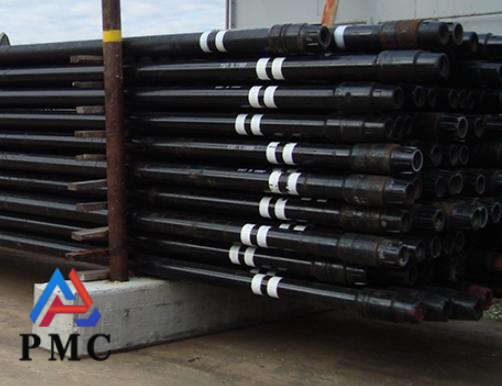
Drill Pipes Structure and Common Specifications
Geological exploration drill pipes are used for water and gas exploration in coal mines and as drilling tools for geological exploration. Geological drill pipes include conventional drill pipes for coal mine tunnels, exploration drill pipes with a diameter of less than Φ89mm for oil drilling, and down-the-hole drill pipes for rock drilling in mines. The drill pipe is the basic component of the drill string. It is made of seamless steel pipe (the wall thickness is generally 9~11mm). Its main function is to transmit torque and transport drilling fluid, and the wellbore is deepened by gradually lengthening the drill pipe. Therefore, drill pipe plays a very important role in drilling. First, let us understand the structure and specifications of the drill pipe.
Drill pipes parameters
Diameter: Φ34.0mm, Φ42.0mm, Φ50.0mm, Φ63.5mm, Φ73.0mm, Φ89.0mm
Length: 0.5m, 0.8m, 1.0m, 1.5m
Drill pipe is made of seamless steel pipe, the wall thickness is generally 9~11mm, and it consists of two parts: drill pipe body and drill pipe joint.

Drill pipes buckle type
Connection type: flat buckle, cone buckle
Flat buckle: Φ34.0mm, Φ42.0mm, Φ50.0mm
Conical buckle: Φ63.5mm, Φ73.0mm, Φ89.0mm
Flat buckles are generally used for small diameter geological drill pipes. As the diameter of the drill pipe increases, the hole depth and drill pipe torque will increase accordingly. The drill pipe connected with a taper buckle can ensure the transmission of torque when the drill pipe is working, and it is also more convenient to disassemble. It can also be customized according to the special needs of customers.
The steel grade of drill pipe refers to the grade of drill pipe steel, which is determined by the minimum yield strength of drill pipe steel. API stipulates that there are five types of drill pipe steel grades: D, E, 95 (X), 105 (G), and 135 (S), among which grades X, G, and S are high-strength drill pipes. The higher the steel grade of the drill pipe, the greater the yield strength of the pipe, and the greater the various strengths of the drill pipe (tensile strength, torsion resistance, external extrusion resistance, etc.). In the strength design of the drill string, it is recommended to increase the strength of the drill string by increasing the steel grade rather than increasing the wall thickness.
Application of Drill Pipes
1. Onshore oil drilling: In onshore oil well drilling, the drill pipe is a key piece of equipment. It transmits the power of the ground drilling rig to the drill bit, causing the drill bit to rotate and break the rock. The drill pipe also provides a channel for drilling fluid, which is transported to the drill bit through the inside of the drill pipe to cool the drill bit, carry cuttings back to the surface, and maintain a stable downhole working environment.
2. Offshore oil drilling: Drill pipes are also indispensable when drilling for oil and gas on offshore platforms. Due to the complex marine environment, the performance requirements for drill pipes are higher. Drill pipes need to withstand the corrosion of seawater, high pressure environment, and the shaking of the platform.
3. Mineral resource exploration: In the process of geological exploration for metal minerals (such as copper, iron, gold, etc.) and non-metallic minerals (such as coal, phosphate, etc.), drill pipes are used to obtain underground core samples.
4. Hydrogeological Exploration: Drill pipes are also widely used in groundwater exploration and research. They can help drill wells and understand groundwater levels, aquifer distribution, and water quality.
Read more: Common Drill Pipe Connection


